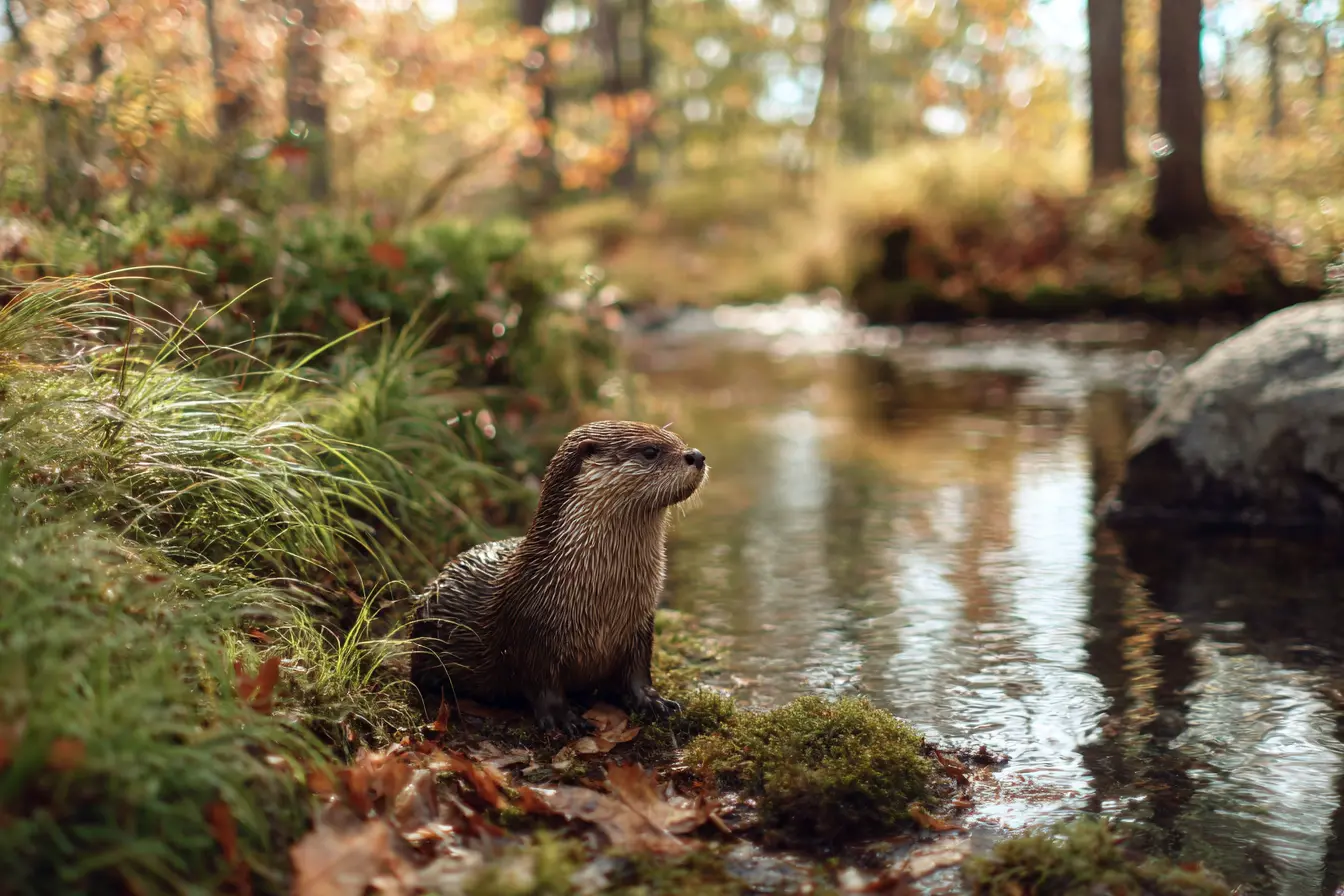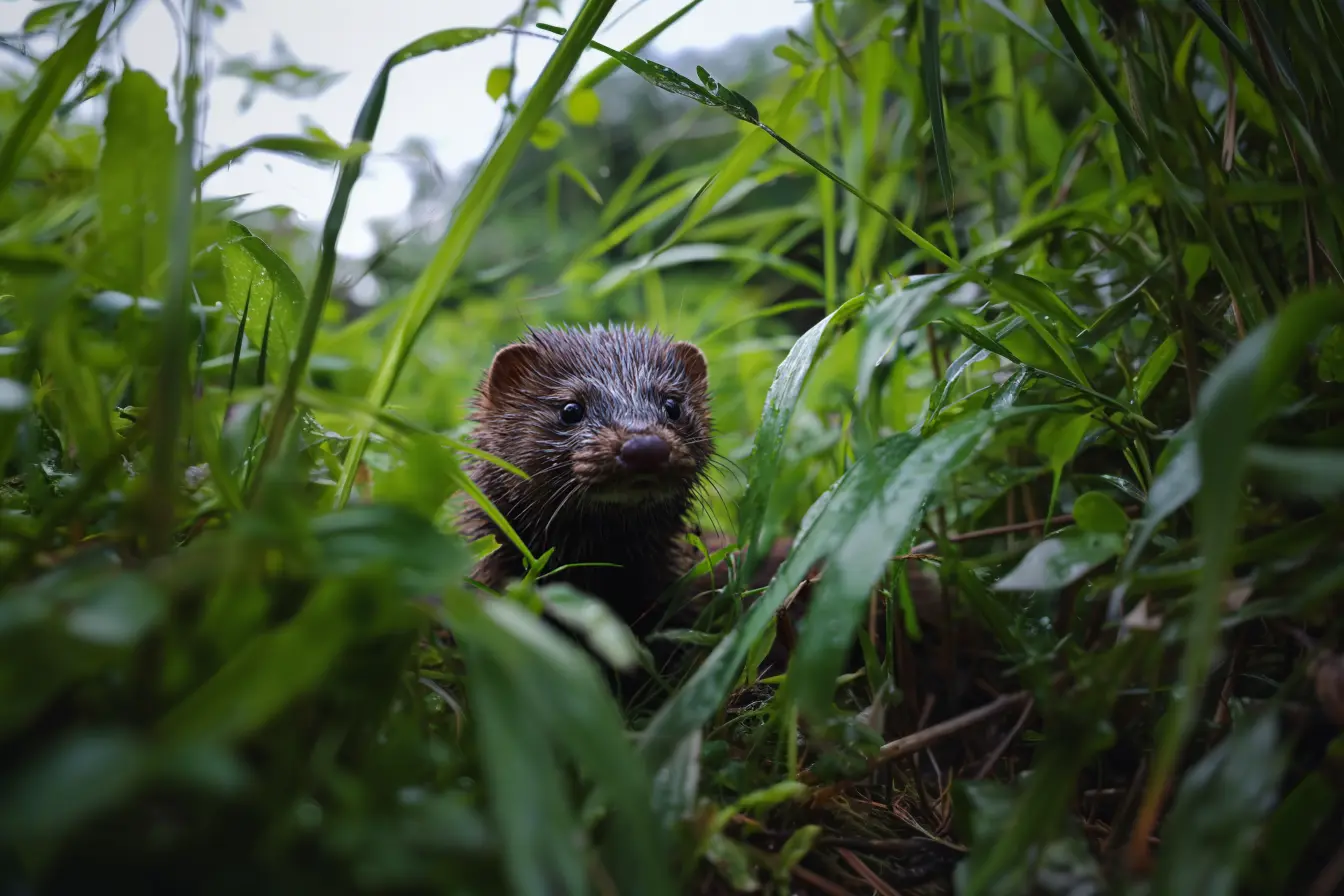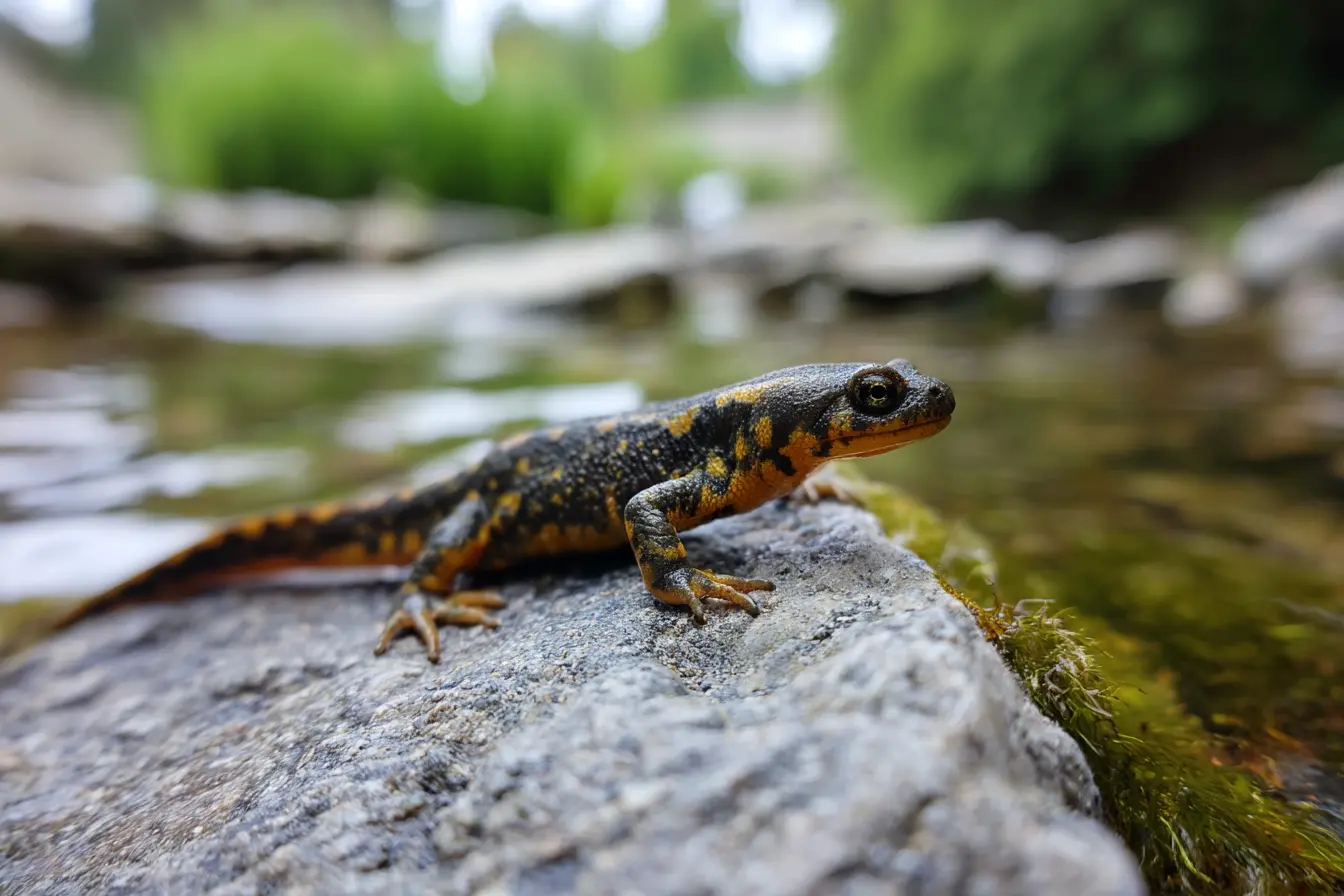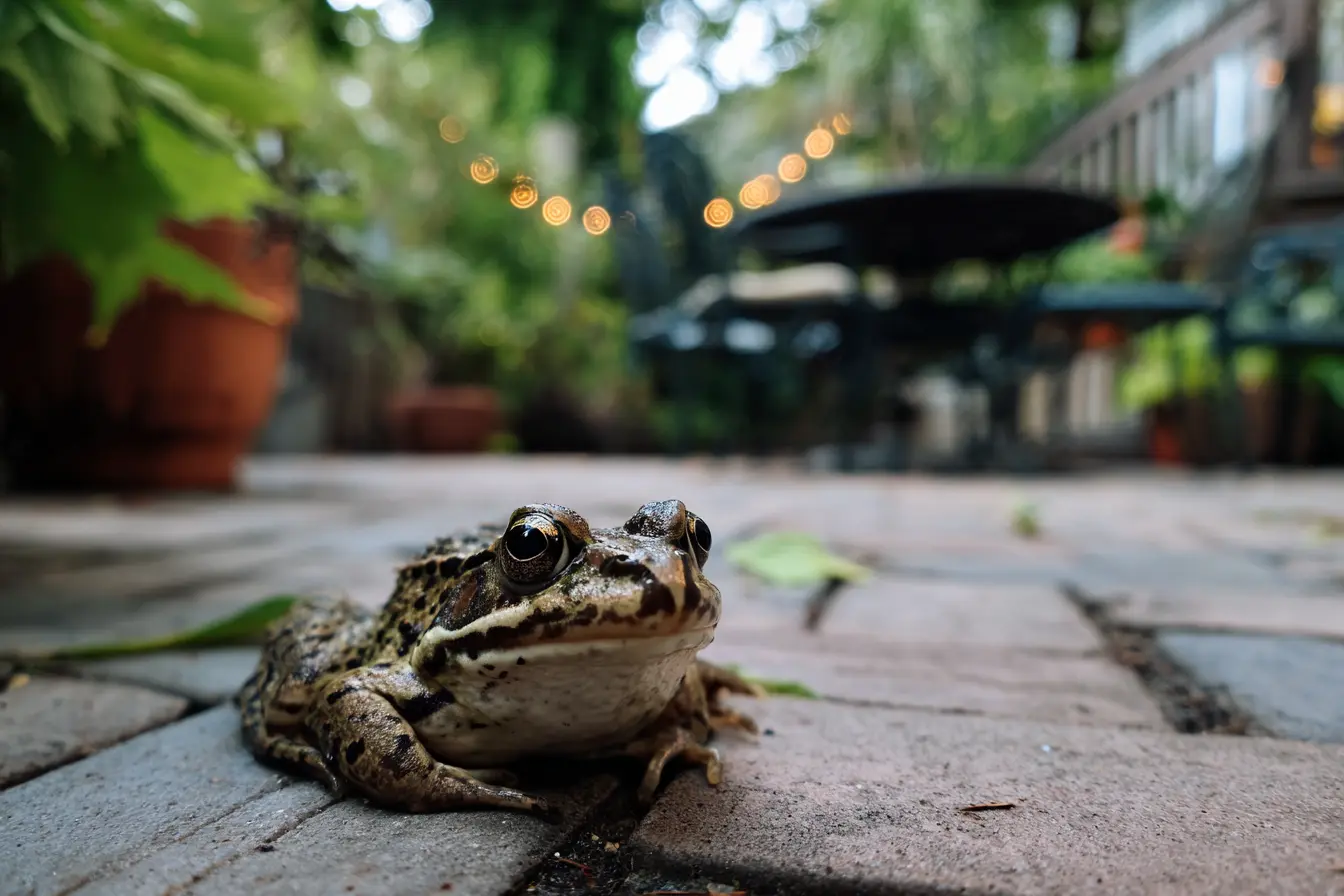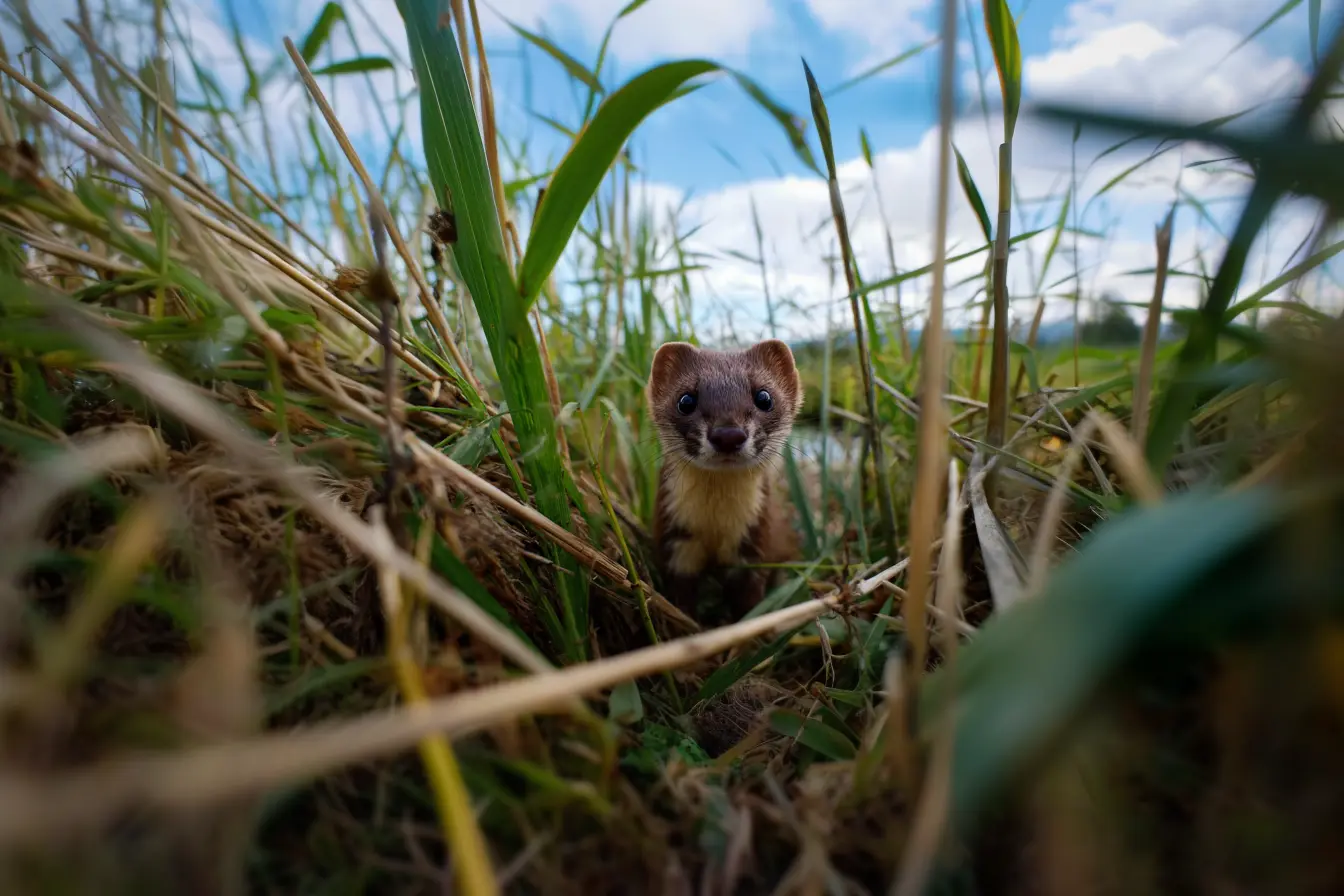
Weasels in the UK
The weasel (Mustela nivalis) is the UK’s smallest carnivorous mammal, but it is one of the most agile and effective hunters in the countryside. This secretive predator plays an important ecological role in controlling populations of small mammals, especially rodents. Despite its widespread presence, the weasel is often overlooked due to its elusive behaviour and modest size.
This blog post provides a comprehensive guide to weasels in the UK, covering their appearance, behaviour, habitat, diet, reproduction, threats, conservation status, and how to distinguish them from similar species.
Identification and Appearance
Weasels have long, slender bodies, short legs, and small, rounded ears. Their distinctive body shape allows them to follow prey into narrow tunnels and crevices, making them highly efficient hunters of burrowing animals like voles.
Key features
- Size: Adult weasels typically measure 15 to 25 centimetres in length, with females being significantly smaller than males.
- Fur: Their coat is a rich, reddish-brown on the back and flanks, with a clean white underside.
- Tail: The tail is short and does not have a black tip, which helps distinguish them from stoats.
- Face: They have a pointed snout and bright, dark eyes.
Weasels do not change colour in winter in the UK, unlike some stoats in northern areas, which may develop a white coat.
Distribution and Habitat
Weasels are widespread throughout mainland Britain, including England, Wales and Scotland, but they are absent from Ireland and most offshore islands.
Preferred habitats
- Hedgerows and field margins
- Woodland edges and clearings
- Rough grasslands
- Moorland and upland heath
- Gardens and rural buildings
Weasels are habitat generalists and can survive in a wide range of environments, provided there is sufficient cover and prey. They are particularly associated with areas where small rodents are abundant.
Behaviour and Lifestyle
Weasels are solitary animals and lead highly territorial lives. They are active mainly during the day (diurnal), although they may also be seen at dawn and dusk.
Movement and hunting
Weasels move with quick, jerky movements and a low, fluid posture. Their ability to twist and turn allows them to pursue prey into tight burrows and undergrowth.
They are excellent climbers and swimmers, although they typically hunt on the ground. A weasel’s territory may range from one to several hectares, depending on food availability.
Scent marking
Weasels use scent glands to mark their territories with musky secretions. They may also leave droppings (scats) at prominent locations along their travel routes.
Diet and Hunting
Weasels are obligate carnivores with a high metabolic rate, requiring them to eat frequently to maintain their energy levels.
Common prey
- Field voles
- Bank voles
- Wood mice
- Young rabbits
- Shrews
- Small birds and bird eggs
- Frogs and insects (occasionally)
Voles are the primary prey in most habitats. A weasel may kill more than it immediately needs and store surplus food in caches for later consumption.
Reproduction and Life Cycle
Weasels breed in spring and summer. Males seek out females by following scent trails. After mating, the female builds a nest in a burrow, log pile or dense vegetation.
Breeding facts
- Gestation: Approximately 35 days
- Litter size: Typically 4 to 6 kits
- Weaning: Around 5 weeks
- Independence: Juveniles begin hunting at 8 to 10 weeks
- Maturity: Females can breed in their first year
A female may produce more than one litter in a favourable year, particularly if food is plentiful.
Predators and Threats
Weasels are preyed upon by larger predators and face several human-related threats.
Natural predators
- Tawny owls
- Foxes
- Stoats
- Buzzards and other birds of prey
Human-related threats
- Road mortality
- Habitat fragmentation and loss
- Secondary poisoning from rodenticides
- Persecution on shooting estates
Because of their small size, weasels are particularly vulnerable to changes in habitat structure and food availability.
Conservation Status
Weasels are classified as a species of Least Concern in the UK. They are widespread and relatively common, but detailed population estimates are difficult to obtain due to their elusive nature.
Unlike some other British mammals, weasels are not legally protected under the Wildlife and Countryside Act 1981. They can be legally trapped or controlled, provided this is done humanely and in accordance with relevant legislation.
Although not currently considered threatened, weasel populations can suffer locally due to intensive land management, overuse of rodenticides, and the simplification of farmland habitats.
Weasels versus Stoats
Weasels are often confused with stoats, which are similar in appearance but have several distinguishing characteristics.
Differences
- Size: Stoats are larger and more robust.
- Tail: Stoats have a black tip on the tail; weasels do not.
- Gait: Stoats tend to move with bounding leaps; weasels move more fluidly.
- Habitat: Both share similar habitats, but stoats may be more common in upland areas.
Importance in the Ecosystem
Weasels play a key role in controlling populations of small mammals, particularly voles and mice, which can become agricultural pests if left unchecked.
By regulating prey populations, weasels help maintain the balance of grassland and farmland ecosystems. Their presence is often an indicator of healthy habitats with good biodiversity.
Observing Weasels in the Wild
Weasels are difficult to spot due to their fast movements and preference for cover. However, they may be seen:
- Darting along hedgerows or dry stone walls
- Hunting in open fields at dawn or dusk
- Crossing country lanes or paths in rural areas
Look for signs such as feeding remains, small tracks, and scats near vole runs or rabbit burrows.
Conclusion
Weasels are energetic, efficient, and often under-appreciated members of the British countryside. Their small size belies their importance as top predators of small mammals. While currently widespread, their local populations are sensitive to land-use changes, pesticide use, and habitat degradation.
Protecting hedgerows, field margins, and small mammal populations indirectly supports weasels. As part of the UK’s natural heritage, these remarkable creatures deserve greater attention and understanding from wildlife enthusiasts and land managers alike.
Related Vets
Vets near you
Speciality vets
- Aquatics vet specialists
- Birds vet specialists
- Camelids vet specialists
- Cats vet specialists
- Cattle vet specialists
- Deer vet specialists
- Dogs vet specialists
- Equines vet specialists
- Exotic vet specialists
- Goats vet specialists
- Pigs vet specialists
- Poultry vet specialists
- Sheep vet specialists
- Small Mammals vet specialists
- Wild vet specialists
